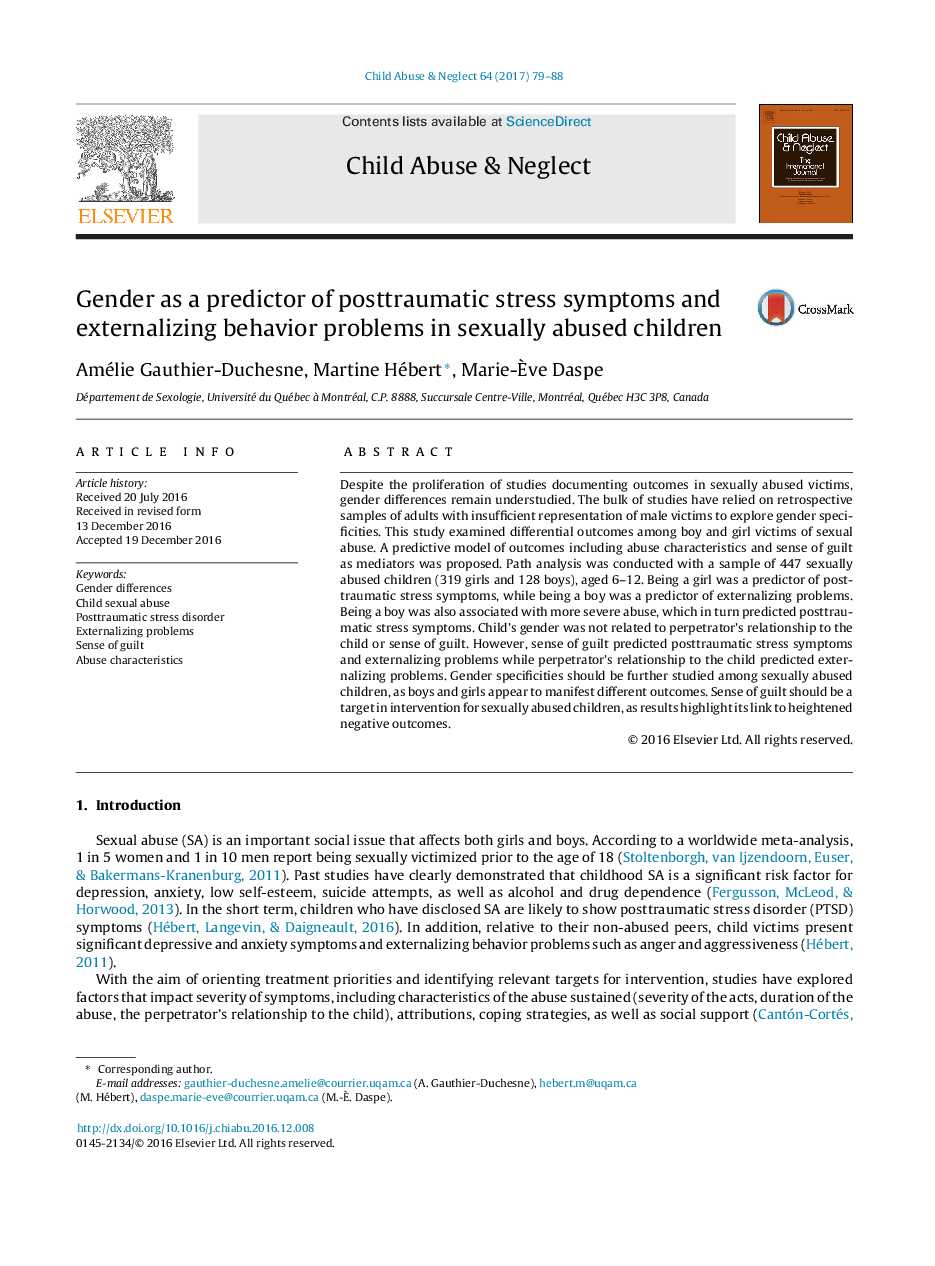| Article ID | Journal | Published Year | Pages | File Type |
|---|---|---|---|---|
| 4936019 | Child Abuse & Neglect | 2017 | 10 Pages |
Abstract
Despite the proliferation of studies documenting outcomes in sexually abused victims, gender differences remain understudied. The bulk of studies have relied on retrospective samples of adults with insufficient representation of male victims to explore gender specificities. This study examined differential outcomes among boy and girl victims of sexual abuse. A predictive model of outcomes including abuse characteristics and sense of guilt as mediators was proposed. Path analysis was conducted with a sample of 447 sexually abused children (319 girls and 128 boys), aged 6-12. Being a girl was a predictor of posttraumatic stress symptoms, while being a boy was a predictor of externalizing problems. Being a boy was also associated with more severe abuse, which in turn predicted posttraumatic stress symptoms. Child's gender was not related to perpetrator's relationship to the child or sense of guilt. However, sense of guilt predicted posttraumatic stress symptoms and externalizing problems while perpetrator's relationship to the child predicted externalizing problems. Gender specificities should be further studied among sexually abused children, as boys and girls appear to manifest different outcomes. Sense of guilt should be a target in intervention for sexually abused children, as results highlight its link to heightened negative outcomes.
Keywords
Related Topics
Health Sciences
Medicine and Dentistry
Perinatology, Pediatrics and Child Health
Authors
Amélie Gauthier-Duchesne, Martine Hébert, Marie-Ãve Daspe,
